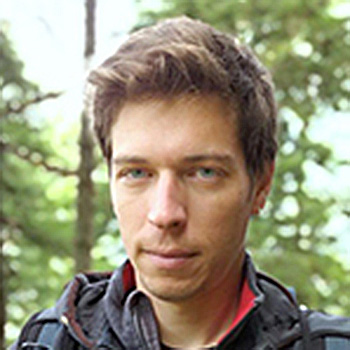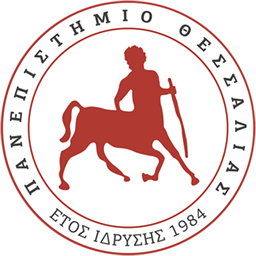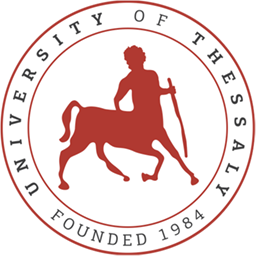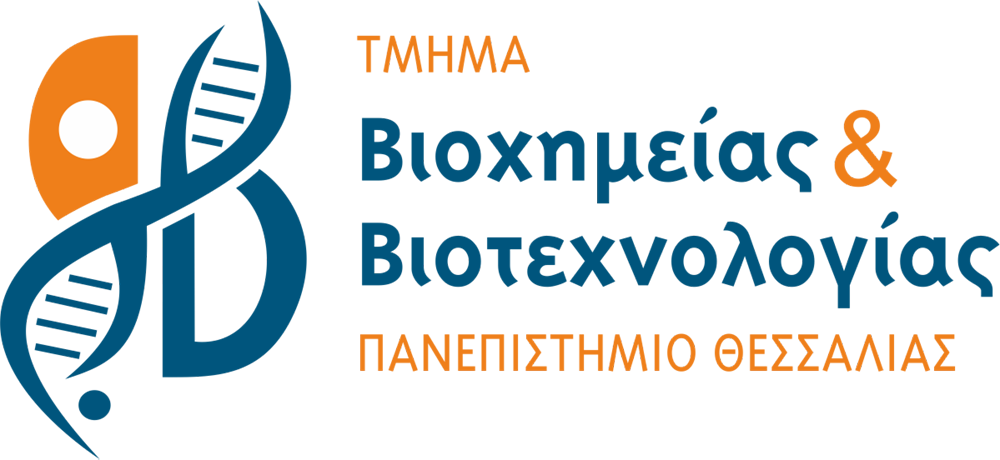Evolution
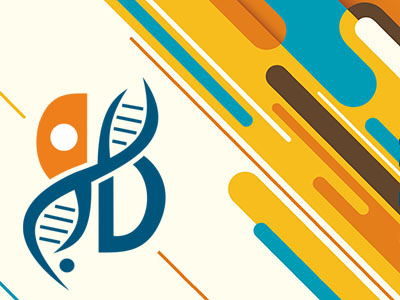
Theory: 3 hours/week | Tutorials: 1 hour/week | ECTS Units: 5
Content – Aim of the course
The Theory of Evolution, when presented by Charles Darwin, really shocked the Christian society and triggered, and still does, serious arguments and controversy within the scientific community. However, at the same time this very same theory has consistently been the greatest unifying power that has ever existed in the history of Biology as a science; it has promoted fresh ideas to the biological research and established a new looking of the modern living organisms. In this way, the course aims to present the basic principles of evolution incorporating, wherever possible, recent scientific results.
Analytical Description of the Course
- THE ORIGIN AND INFLUENCE OF EVOLUTIONARY THOUGHT: Principles of evolutionary thought. Origin of species. Various concepts pertaining to the theory of evolution. The theory of evolution after Darwin. Contemporary synthesis. Evolution as theory and fact.
- ECOLOGICAL CONSIDERATION OF EVOLUTION: Adaptations and environment. Ecological niche. Distribution in the space. Population rise. Influence of density on population rise. The biotic environment: hunters and preys. Interaction between species. Diversity and stability of biotic communities. Environmental models.
- HEREDITY: FIDELITY AND MUTABILITY: Mutations: The source of genetic diversity. Influence of mutations on phenotype. The accidental element of mutations. Recombination and rise of diversity. External sources of diversity.
- DIVERSITY: The Hardy-Weinberg doctrine. Diversity in quantitative characters. Diversity in natural populations. The diversity of proteins. Organization of genetic diversity. Genetic diversity among populations. Geographic diversity. Types of diversity. Intraspecific diversity and higher taxonomic stages.
- POPULATION STRUCTURE AND GENETIC ABERRATION: The theory of inbreeding. The genetic structure of inbred (inbreeding) populations. Population size, inbreeding and genetic aberration. The drastic size of population. Mutations in populations of finite size. The principle of the founder. Gene flow. Drastic size and gene flow in natural populations. Genetic aberration in natural populations. Evolution through random genetic aberration. Non-random conjugations due to phenotypic preferences.
- THE INFLUENCE OF NATURAL CHOICE IN THE GENETIC COMPOSITION OF POPULATIONS: The possibility of survival and reproduction is not the same for everybody. The choice at the level of person. How the environment influences adaptivity. The meaning of genetic diversity. The selective inferiority of the heterozygote. The adaptive landscape. Interactions of evolutionary powers. Population adaptivity and genetic load. Natural selection or neutrality. Intensity of natural selection.
- SELECTION IN MULTIGENIC CHARACTERS: Directional selection. Multiple situations of balance. Multigenic heredity. Hereditability and selection response. Genetic correlations. Response to artificial selection. Genetic and developmental homeostasis.
- SPECIATION (SPECIES FORMATION): The concept of the biological species. The genetics of differences among species. Types of speciation. Allopatric-Parapatric-Sympatric speciation. Genetic theories about speciation. The founder principle. Selection for reproductive isolation. Time required for speciation. The significance of species and speciation.
- ADAPTATION: Problems in recognizing adaptation. The adaptable program. Selection levels. Group selection. Theoretical models for the study of adaptation. Evolution of characters of a life cycle. Gender selection. Evolution of genetic recombination and gender.
- THE STUDY OF THE HISTORY OF EVOLUTION: Definitions. Taxonomy. Competitive schools of systematics. Difficulties of phylogenetic conclusions. Phylogenetic conclusions from morphological data. Phylogenetic conclusions from macromolecules.
- FOSSILS: Dating the past. History of life. Origin of life. Procambium life. Mesozoic century. Cenozoic century.
- THE HISTORY OF BIOLOGICAL DIVERSITY: Changes in diversity. Can diversity be regulated? Appearance models. Disappearance models. Allocation of disappearance rate. Massive disappearances. Evolution trends.
- BIOGEOGRAPHY: The significance of phylogenetic analysis. Geographic models. Causes of geographic allocations. Indications used in historical biogeography: Paleontology. Clues used in historical biogeography: Taxonomics. The history and composition of biota in places. Are the biotic communities in balance? Local fluctuations (variations) in species diversity. Origin of prevailing groups.
- ORIGIN OF EVOLUTIONARY INNOVATIONS: Evolution rate. Normalities in phenotypic evolution. Allometry and eterochrony. Origin of higher taxonomic categories. Adaptive significance of evolutionary innovations. Genetics, development and evolution. Genetics and developmental base of morphological evolution. Homeotic changes in drosophila. Maintenance and change in developmental programs. Evolutionary limitations and phenotypic chasms. Developmental integration and macroevolution. Neo-Darwinism and its criticizers.
- EVOLUTION ON MOLECULAR LEVEL: Use of molecular data in evolutionary studies. Techniques. Diversity in single DNA sequences. Evolution rate of sequences. Evolutionary changes in position and number of genes. Uneven crossing over and evolution of doubled genes. Portable, transferable elements. Influences of transferable elements. Evolution of genome size. Evolution of polygenic families. Adaptive evolution from molecular angle. Evolution of genes and proteins. Horizontal gene transfer. Molecular biology and evolutionary biology.
- EVOLUTION OF INTERSPECIFIC INTERACTIONS: Co-evolution. Evolution of use of vital resources. Convolution of competing species. Evolution of relations between hunter and prey. Reciprocity. Genetic study of convolution. Role of evolution in the structure of biotic communities.
- EVOLUTION OF MAN AND SOCIAL IMPLICATIONS OF THE THEORY OF EVOLUTION: Phylogenetic position of mankind. History of fossils in anthropoids (hominoids). Cultural evolution. Natural and mental development of man. Genetic diversity in human populations. Evolution and human behavior. Behavior differences among persons. Differences in intelligence degree. Evolution and society.
Tutorials
Each session is accompanied by tutorial exercises or simulation activities on a PC.
Assessment
The final grade in this lesson is assessed after presentation of projects and a written examination during the exams period.
Reading Suggestions
- Evolutionary Biology, Futuyma, D. J., Crete University Press, 2000.
- Molecular Evolution and Phylogenetics, Nei, M., Kumar S., Oxford University Press, 2000.
- Molecular Evolution and Phylogenetics, Page, R.D.M., Holmes E.C., Blackwell Science Inc., 1998.
- Evolution, Barton N. H., Briggs D. E.G. Eisen J. A. Goldstein D. B. Patel N. H., University of California, Berkeley, 2008.
Teaching Material / E-class
Lecturer
